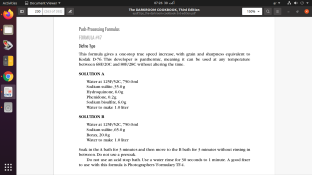Romanko
Member
I have two rolls of exposed var-i-pan film with the "develop before" date of January 1964. I am unable to find any information on this film. According to the box this is "World's Best A.S.A. 100" film. We also know that it is Fine Grain Panchromatic with extra wide latitude and "New thin emulsion". It was made in West Germany and distributed by Supreme Photo Supply Co. Inc. NY.
The plan is to develop in HC-110 dilution B at around 18 °C. I had some good results developing Kodak Verichrome of roughly the same vintage this way.
What development time would you recommend?
The film is 127 type and I don't feel comfortable doing strip tests or using complicated processes like compensating development with strong/diluted baths and the like. I don't know where the films come from so there is no sentimental value involved. I am doing this out of curiosity (I am not feline and should be safe).

The plan is to develop in HC-110 dilution B at around 18 °C. I had some good results developing Kodak Verichrome of roughly the same vintage this way.
What development time would you recommend?
The film is 127 type and I don't feel comfortable doing strip tests or using complicated processes like compensating development with strong/diluted baths and the like. I don't know where the films come from so there is no sentimental value involved. I am doing this out of curiosity (I am not feline and should be safe).
Last edited:








